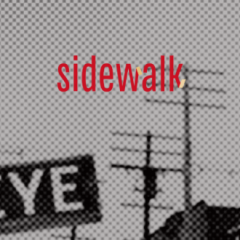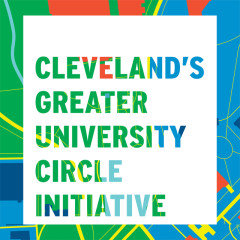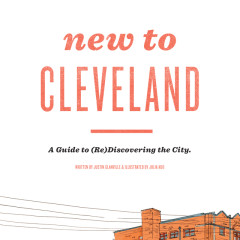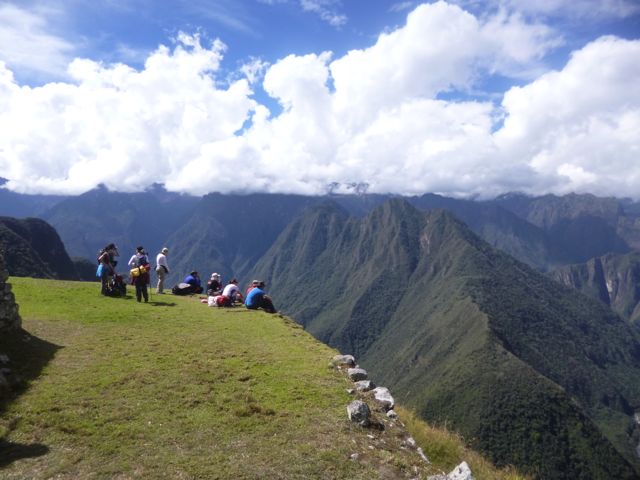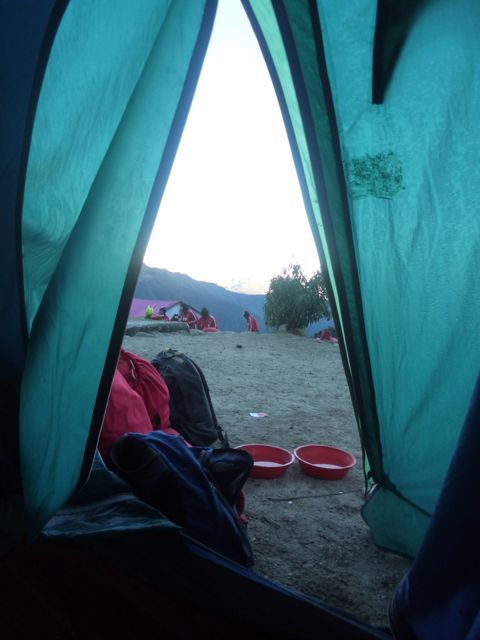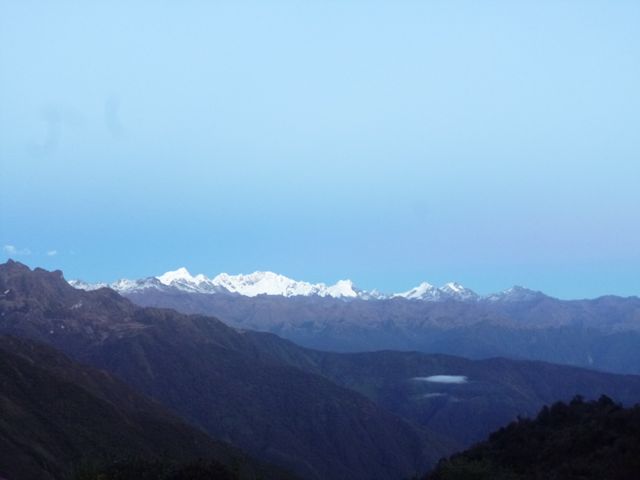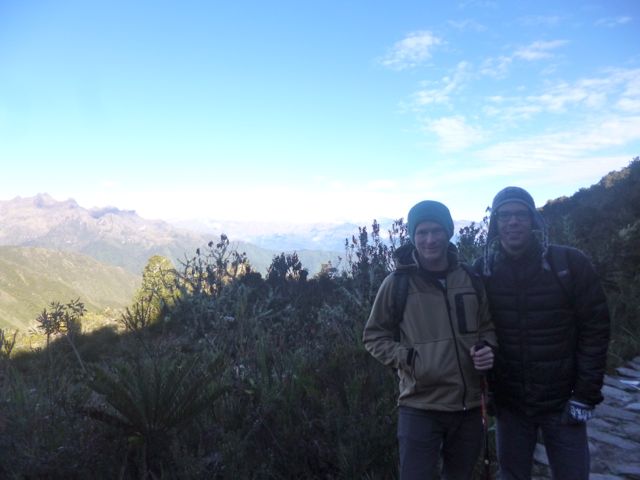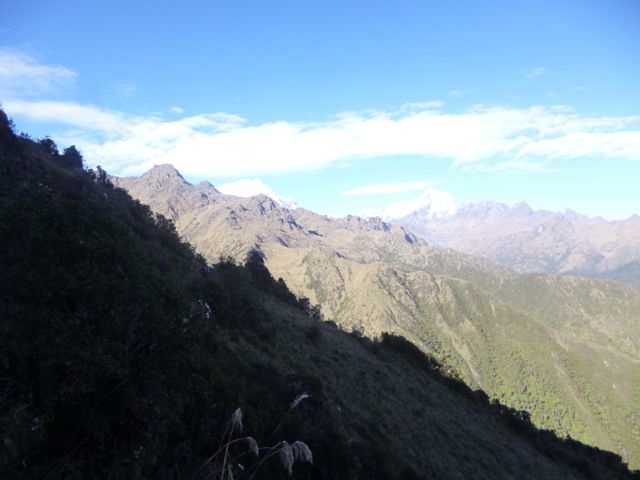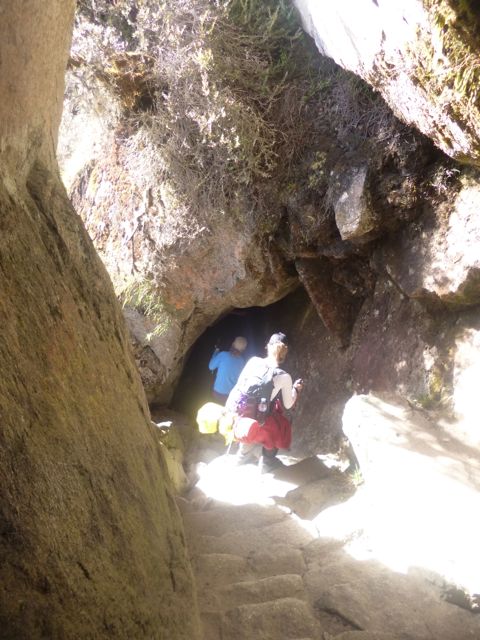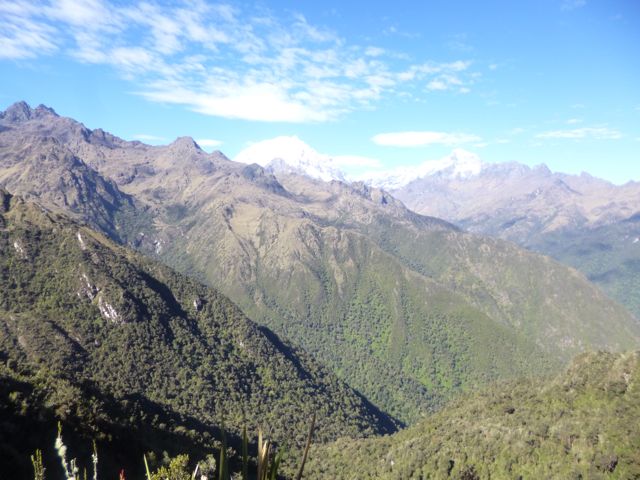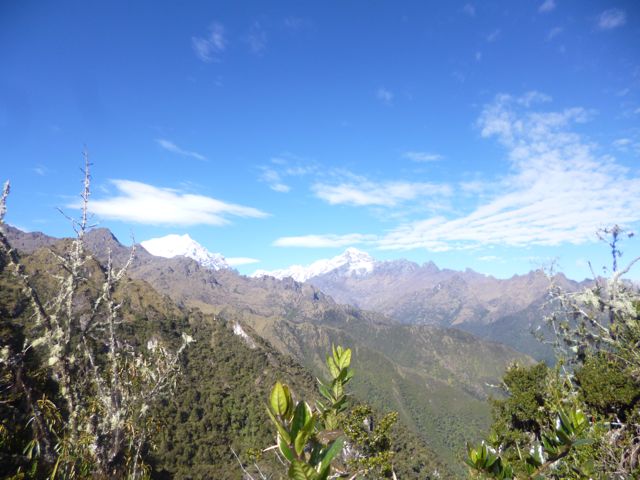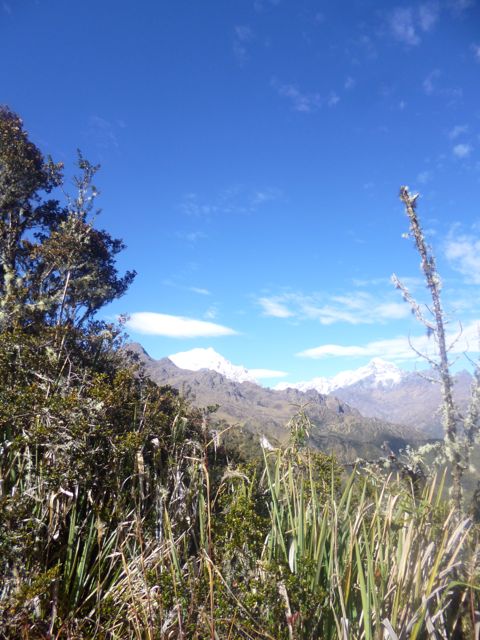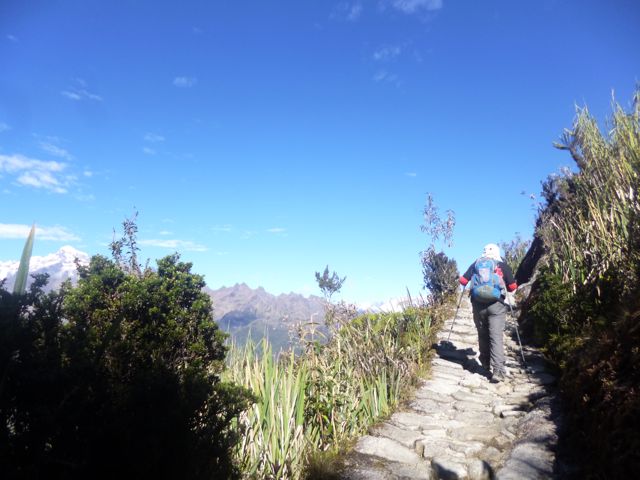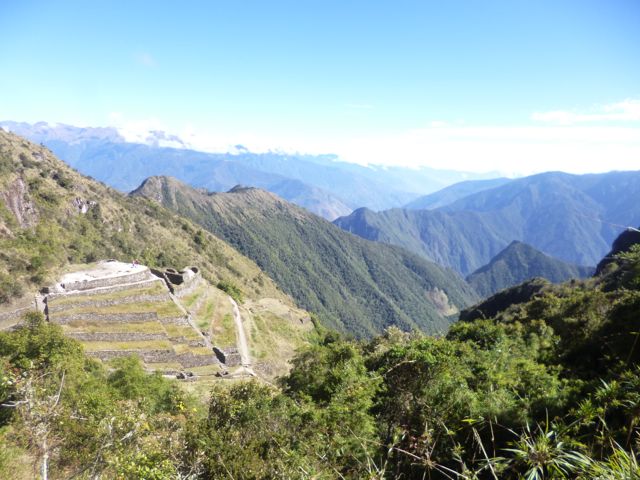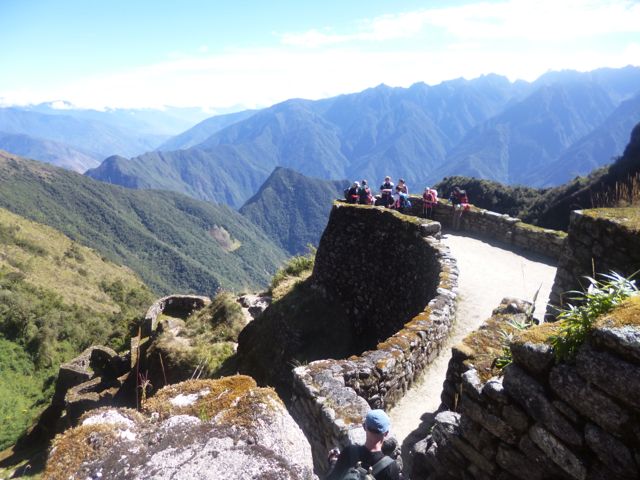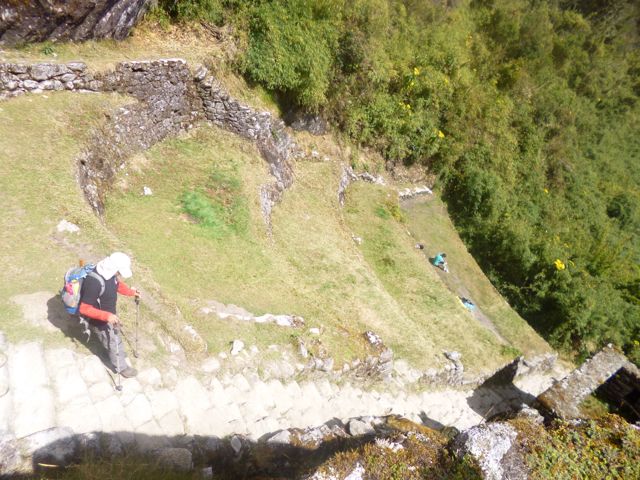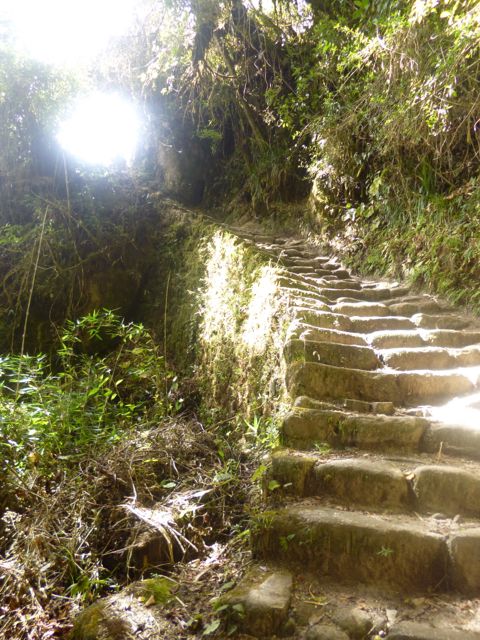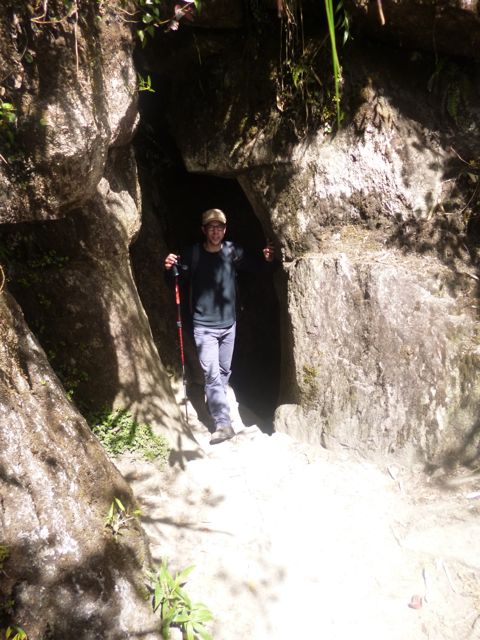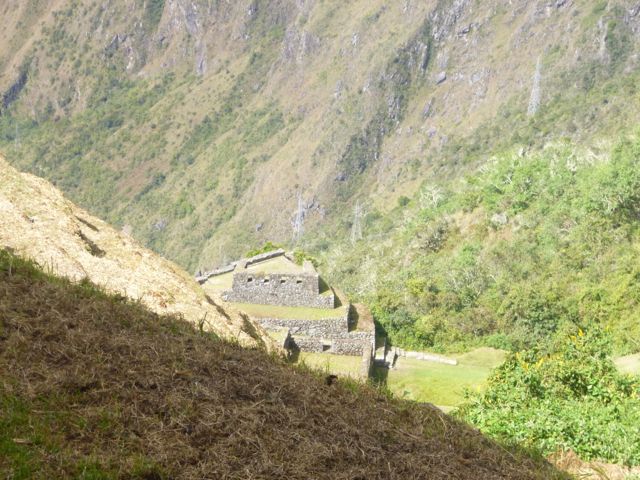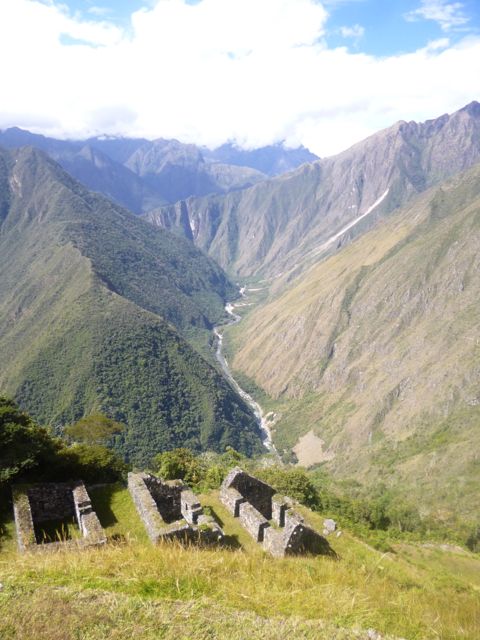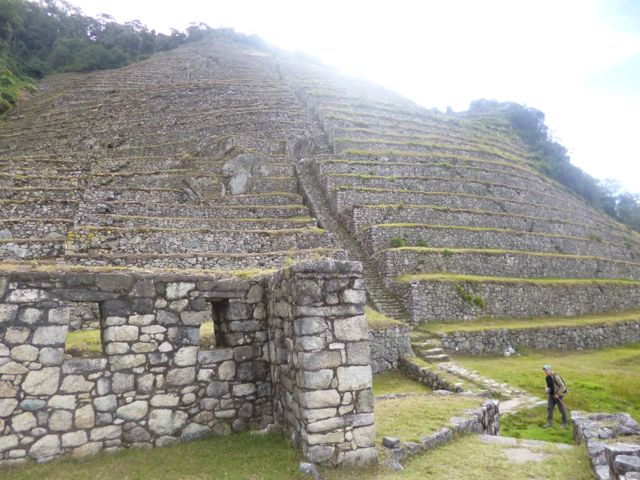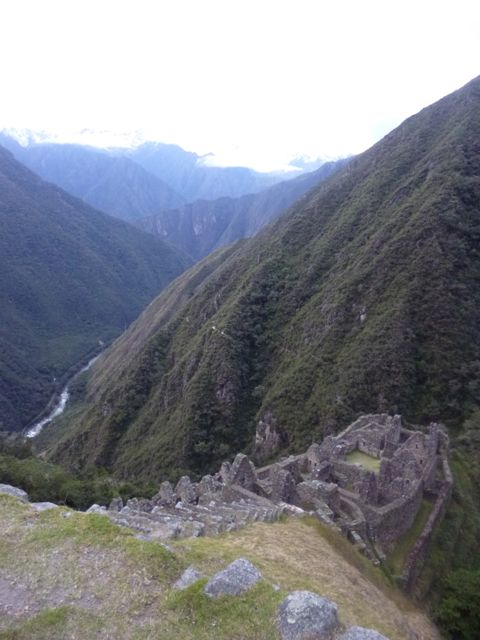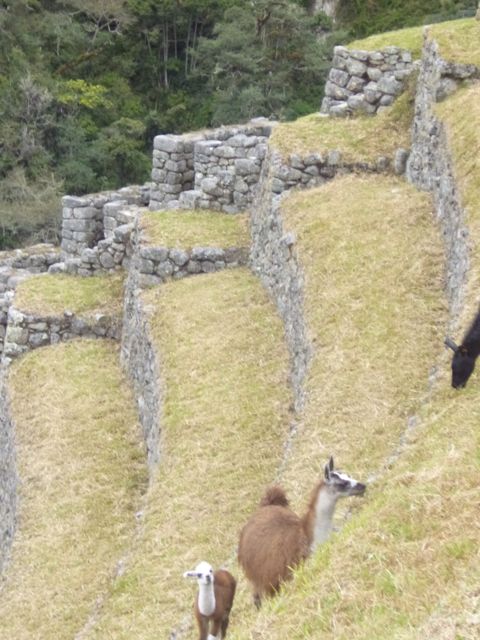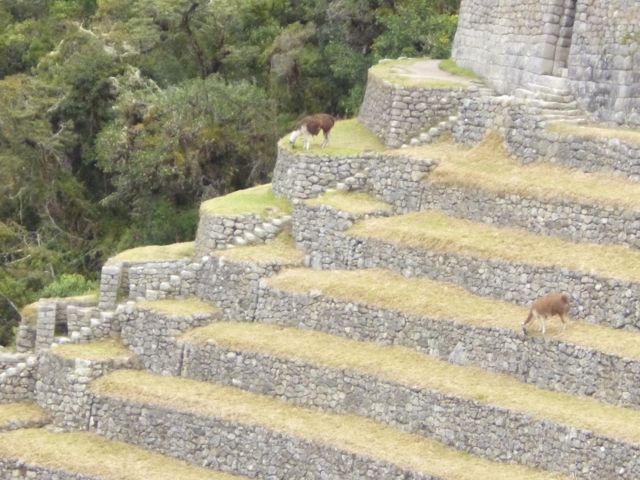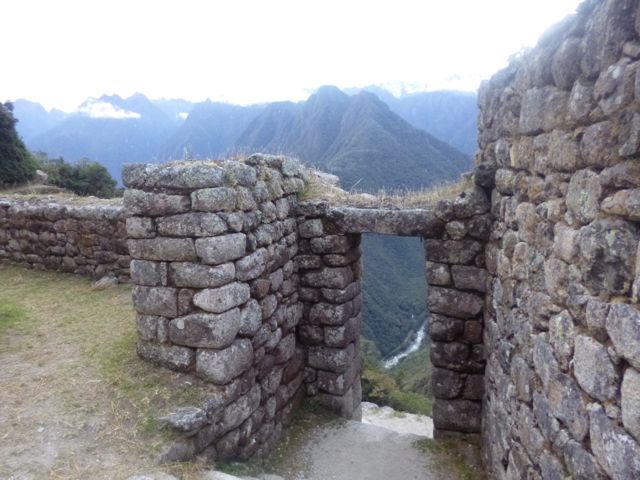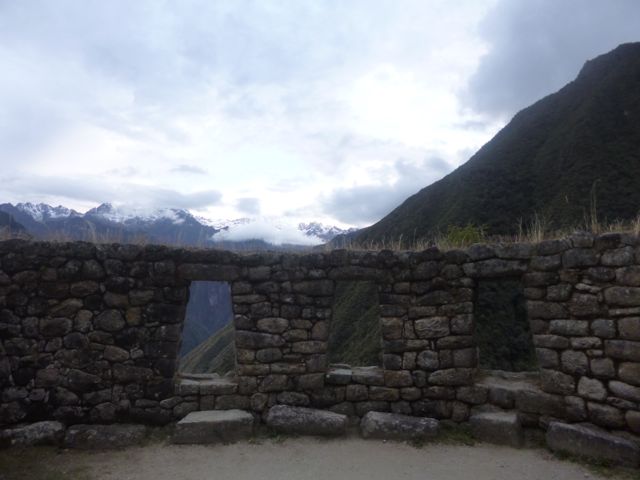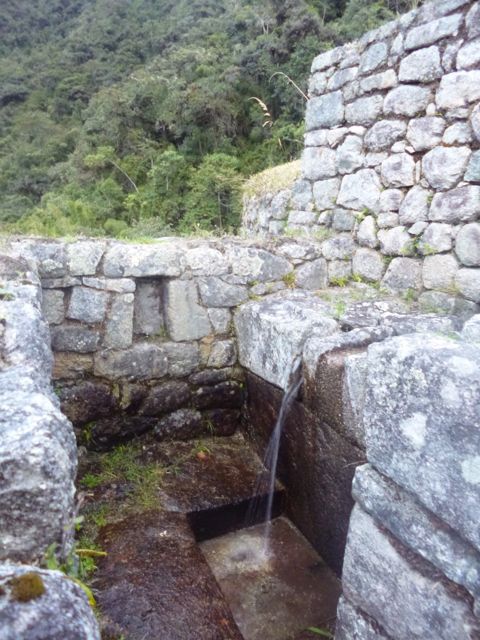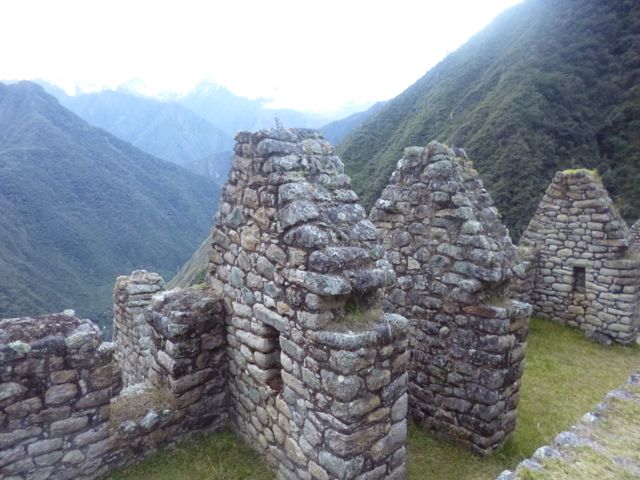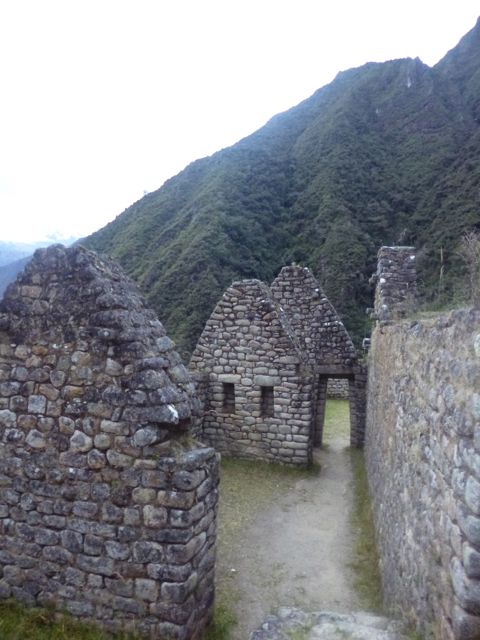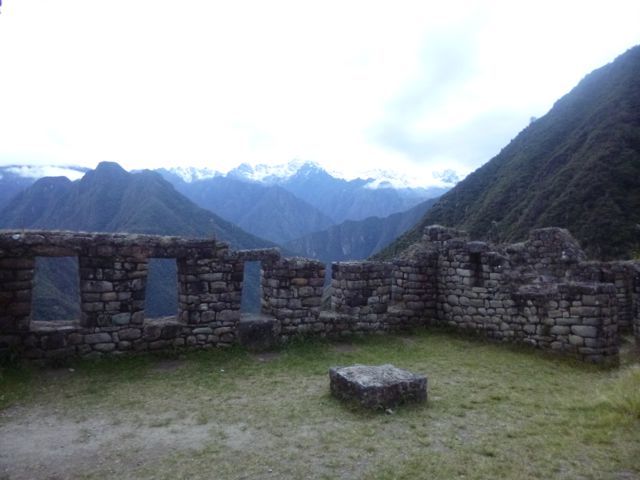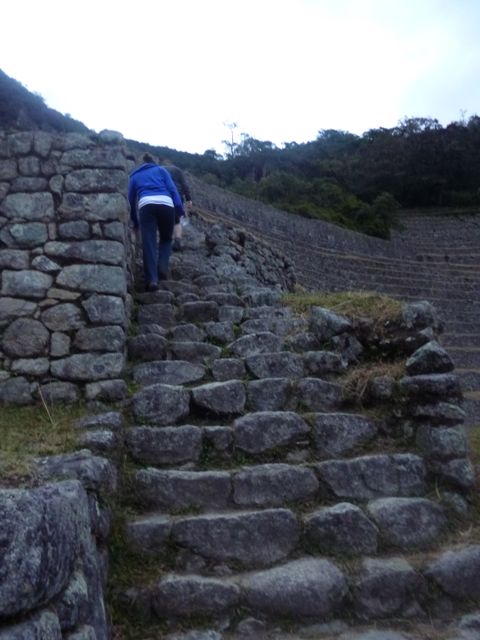Today’s hike was only a half-day, and we rose late — 6 a.m. I heard a groan from a tent one or two down from us.
“Every fiber of my body is hurting,” a voice said.
I scanned my own body. So far, apart from desperately wanting a shower and a clean pair of jeans, I felt OK. I splashed warm water on my face from the bowls the porters brought to our tent.
And looked outside to see a sparkling, high-peak sunrise.
Things went a bit downhill from there, though. Breakfast was an oniony crepe, and I decided it would be a great idea to pair that with about five cups of Milo (a crystallized hot chocolate drink made by Nestle but not available in the U.S.) and some coffee. My stomach, to its credit, started to gurgle and protest, and I felt “off” for most of the rest of the day.
Still, the incredible views and clear skies helped distract me.
More caves to duck through…
More gratuitous scenery shots.
And OK: The constant downhill clomping was starting to become a challenge. Not every fiber of my being hurt, but some of them definitely did, especially in my calves and my butt. And my feet were angry too, mostly from the constant ramming of my toes into the fronts of my boots, as happens when you need to keep bracing yourself on a descent.
That’s the thing about this trail: What’s challenging isn’t the distance traveled, but the extreme changes in elevation (gaining or losing as much as 1,000 meters per day) and the hardness of the stone pathways and stairs. At any given time, you’re either steeply ascending or steeply descending. There’s almost no flat.
There were some hair-raising cliffside curves today.
We came to another Inca site, Phuyupatamarka, meaning “place in the clouds,” even though it was significantly lower than just about all the other sites we’d seen so far.
Again, what struck me about this site was how the buildings follow and build on the natural edge of the cliffs. As if the mountain itself decided to give birth to a settlement.
Casiano talked for a while at this site, and when we continued to hike his vocal tics started to cycle through my head on auto-repeat. In addition to “Why not?”, there was “This is it, guys,” and “Go ahead, Buddy” and “Of coooourse.” And the other thing going through my head was the theme song from the short-lived cartoon series The Mysterious Cities of Gold. Seth had reminded me it ran on Nickelodeon in the late 1980s, and had sung its theme song once in our tent. That was enough to implant the song in my brain for the next few days: “Someday we will find / The city of gold.” I’m not even sure those were the right lyrics, or that I was humming the right melody, but in any case it was a fitting mantra, I guess. (I just checked: Nope, I definitely didn’t have the right melody. But the words are right!)
After Phuyupatamarka, more downhill!
And more caves!
As we descended, the air got warmer and then hot, more birds singing and more sun, flies buzzing — the world suddenly hospitable to life again.
Right before stopping for the day, we came to another stunning Inca site, this one a major agricultural center for the settlements along the trail. It’s called Intipata, “place of the sun.”
The terraces are where the crops were grown: Mostly native potatoes, a type of native tomato, corn and other grains. Irrigation wasn’t required because there’s so much rain in the valley. To sit on one of these terraces and absorb the sun was better than any beach.
At the base of the site, there’s an offering platform where a share of crops from every harvest would have been burned for the gods:
And storage warehouses. That’s the Urubamba River again, and the white line on the side of the mountain is a 3-year-old rockslide that was bad enough to have shut down the disrupted travel into and out of Aguas Calientes for a few weeks.
Some militaristic Belgians from another group tore up behind us on the trail, hell-bent on getting to the campsite even though there were still hours of sunlight left.
When we arrived at camp ourselves, we ate a leisurely lunch and then I read for a while in my tent. Late in the afternoon, Casiano led us to Wiñay Huayana (“forever young”), which he called a “mini Machu Picchu.” The place had all the mysterious allure of Sayaqmarka and then some.
You can see the peaked walls that would have supported roofs are still present on most of the houses. Amazing to think that this place was so overgrown during Hiram Bingham‘s explorations that he never found it. In fact, it wasn’t rediscovered until 1941. “This valley still holds many secrets, guys,” Casiano told us. And it wasn’t hard to believe he’s right.
Baby llama cuteness alert!
At the top of the hill was the temple, demarcated by three stone stairs turning at a 90-degree angle into a door:
And down below, along an impossible steep staircase, perhaps the loveliest part of the site: A descending series of ritual baths, water from a distant spring still cascading gently through them.
I could have lost myself for hours in the village of stone houses at the base of the site, but the sun was already setting.
Through a doorway, you can see the natural spring that fed the baths:
We finally turned back up the hair-rising flight of stairs to rejoin Casiano.
As we made our way back to camp in the near-dark, I found myself at the head of the group. At one point, I noticed a large bird sitting before me on the trail. It was the size of a small chicken and had two long tailfeathers and eyed me sideways, the whites of its eyes showing. Finally, when I was maybe a yard away, it gave me a last glare and flew off. We hiked for a few more minutes and there it was again, on the path before me with its sinister eyes.
“Casiano!” I called.
“Yeah, buddy.”
“What’s this bird with the two long tail feathers? It doesn’t seem afraid of us at all. It just sits here –”
He was pushing his way to the front of the group. “Ah! You saw a nightbird!” He edged past me and kicked his foot at the bird, which beat its wings angrily and flew off. “That’s the nightbird. Sometimes, if you’re alone on the trail, it’ll attack your head. There’s a legend that it steals souls.”
I shuddered a little despite myself, imagining the bird divebombing my head Tippie Hedren-style to suck out my soul.
As I research what exactly it might have been (Casiano only called it “nightbird”), the closest I can come is the nightjar, subspecies of which are found around the world. There’s also a legend that it sucked the milk of goats.
Back at camp, we had our most elaborate dinner yet. It included two cakes — one chocolate and one jello — and this cucumber bird atop a rice dish that reminded me a little too much of the soul stealer.
Dinner was festive, as usual, but afterward things got real serious real fast. Casiano wanted our group to be the first to the Sun Gate in the morning. The Sun Gate is the traditional and most formal entrance to Machu Picchu, and only people hiking the “official” Inca Trail can enter the site through it.
To get there first, we’d need to rise at 3:25 a.m., eat breakfast, and take a short hike that would get us to a checkpoint by 4:15 a.m. The checkpoint would open at 5:30 a.m., after which there’s a 90-minute hike to the Sun Gate. We needed to minimize possible delays by packing up as much as we could tonight.
The atmosphere of the dining tent became tense and nervous, as it had been during our orientation on the eve of the first day. Grim-faced, everyone scattered to their tents to prepare. I wasn’t sure why it was so important for us to be first to the Sun Gate, but to question that would have been heresy. Clearly, it was important, that was all.
When Seth and I got back to our tent, we laughed for a while about the sudden change in tone and talked about… well, everything, as it’s so easy to do at night in the dark with an old friend. I finally forced myself to shut my eyes, knowing there were only a few hours left until the mad rush, and fell asleep instantly.





